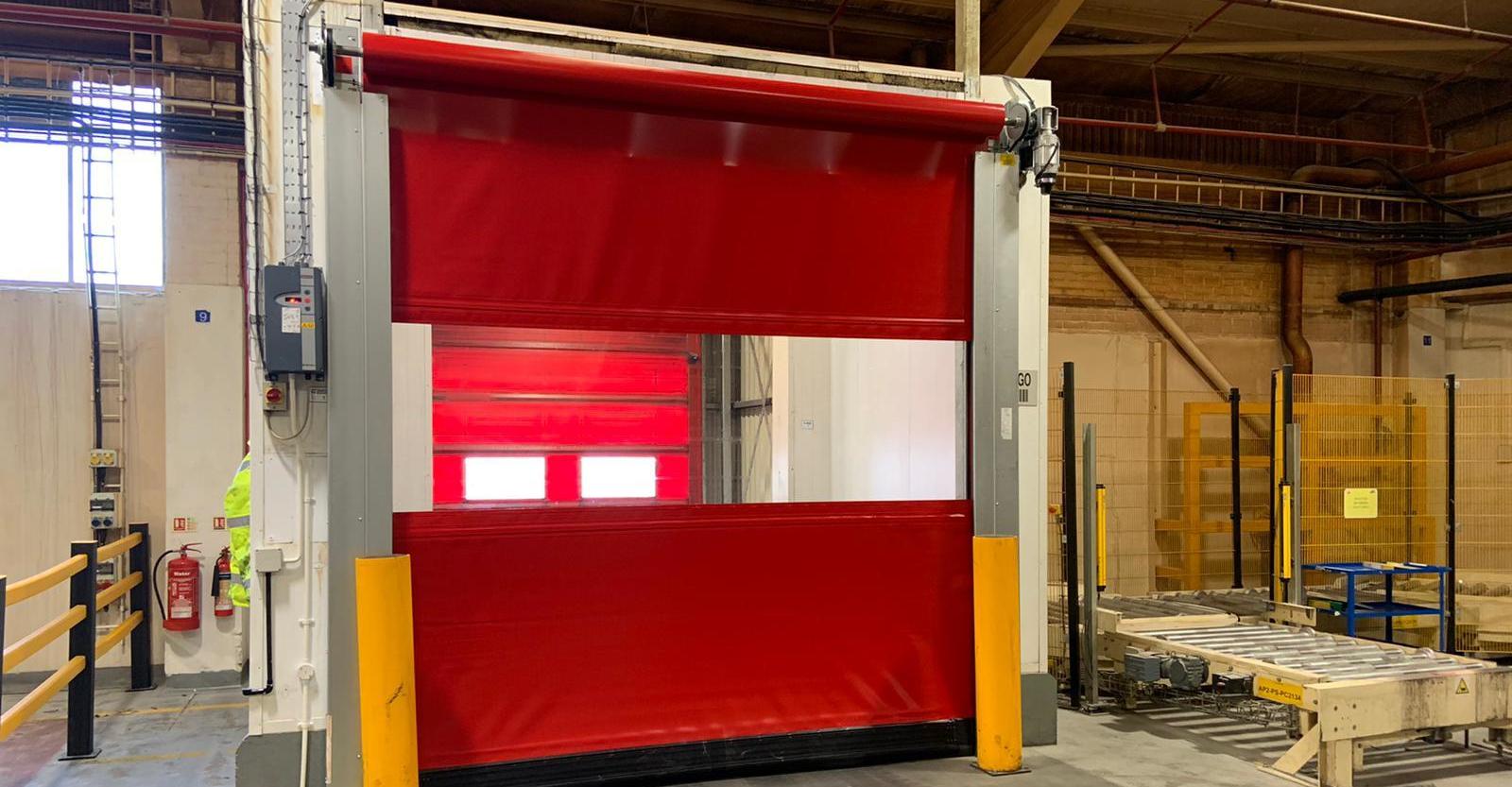How do food factories keep their cool?
Posted on 16th August 2023 at 09:00
How do Food Factories manage to keep their premises so cool – even in the heatwave?
Read on to find out three ways they make savings on time, energy and money and how you can do it too.
Given the recent weather, we have all been searching for ways to keep cool. But what about those sites where it is their business to regulate their temperatures? I’m talking food factories in particular here. They need to make sure that their stock remains at a consistent temperature at all stages of production, protect from pests and contamination and yet keep their costs as low as possible.
How do they manage it?
Well, here are some of their most common solutions. Read on to find out the best ways of regulating temperature, saving energy and costs and what you could learn from them.
1. Choose your external doors wisely.
I’ve said it before and I’ll say it again. The vast majority of your heat (or cold) will escape through your doors. It is just an unfortunate fact. This is especially true if you use your door a lot or, even worse, keep it open in the hot weather. This leaves your factory floor open to the elements, pests or even intruders. Now, food factories are busy places and deliveries are constantly arriving. They can’t just leave the door wide open after all. That could potentially ruin their current run of production. Instead, food factories rely on an external Rapid Action Door.
These doors open and close quickly (hence Rapid) and provide an effective seal between environments – thus saving on time, money and expensive heating bills. In fact, you could save up to 32% on your bills ( Study by the CETIAT Laboratory) In a windy area? You might worry that your curtain will just billow out of the tracks but we can protect against that by installing wind bars across your curtain. These can help your Rapid Action resist even storm force winds.
In addition, you can upgrade your Roller Shutter and even your Rapid Action Doors to better insulated versions. This means that they will be better at keeping your temperature stable, whatever the weather. Alternatively, PVC Strip Curtains can be hung behind your door to provide another layer of protection against pests, pollution and heat escape.
2. Choose your Internal Cold Room Doors wisely.
If your premises contains chillers or freezers, then it is highly likely that you will be familiar with Internal Rapid Action Doors being used to regulate and control temperatures. Why? Because they are the most effective way of sealing in temperatures and thus save time, energy and money. They are most often used for separating chilled or frozen areas from ambient areas or even to separate deep freeze areas from chilled areas.
Now these doors can become very cold and, as you well know, cold and machinery do not usually mix. Don’t worry though. Some of these doors have been specially designed by the manufacturers to withstand very low temperatures (some as low as -30) and are prepared to withstand the cold. This could be through heated side tracks, de-icing systems and extra tension in the curtain itself to help prevent condensation. Some fold up doors open once every hour whether activated or not just to shake off any ice that might form.
That’s smart.
Now, there is a lot of choice out there when it comes to internal doors and, sometimes, it can be a little overwhelming. It may be tempting to just decide on price alone. That very often proves to be a mistake. Make sure you have the right one the first time around by asking our Stanair experts to help you.
3. Think about installing Airlocks
You may be familiar with the concept of an airlock. Its basic function is to separate controlled temperature areas and help to maintain consistent temperature as well as protecting against contamination. You may have seen these on TV or Movies when someone enters a spaceship from space. The airlock has two doors and one will not open until the other one closes.
This serves two purposes:
1. The temperature between areas can be more carefully regulated.
2. Contaminants can be prevented from entering and it will help you be more hygienic.
If your operation depends upon strict temperature control, maintaining high hygiene levels or repelling air borne contaminants, then this is the system you need. Airlock doors are very quick, easy to maintain and can be fully automated with no touch access required. They can also be adapted to your needs in terms of height or width helping to create the best seal possible.
Finally, whichever type of Rapid Action Door you may plump for, there is no denying that they are a big investment. Naturally, you want to be sure you are getting the best possible solution for you and your business. This is why you should always consult an expert on the range of doors available to you, their uses and features and how they could best benefit you.
With over 49 years of experience in the field, our independent Stanair experts are always on hand to help you reach the best decision for you…not for us!
To that end, we will not only advise you on the best choice of a wide range of options but we can also take you to see those doors in action. This means you can discuss the door and its benefits with someone who already owns one! That will certainly be a load off your mind…
Thinking of upgrading your premises’ doors or shutters?
Call us today on 01536 482187 or visit our website www.stanair.co.uk to see which doors we could open for you




Share this post:




